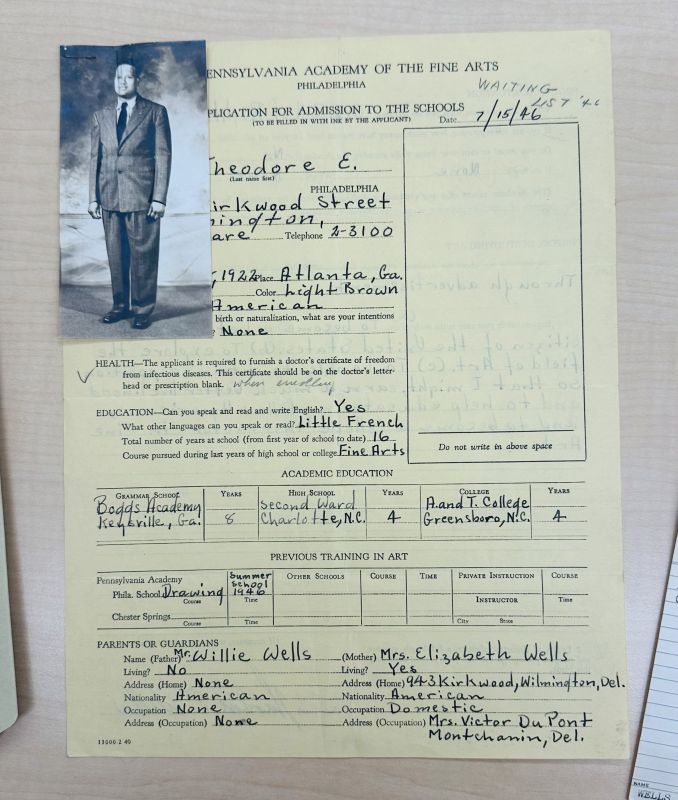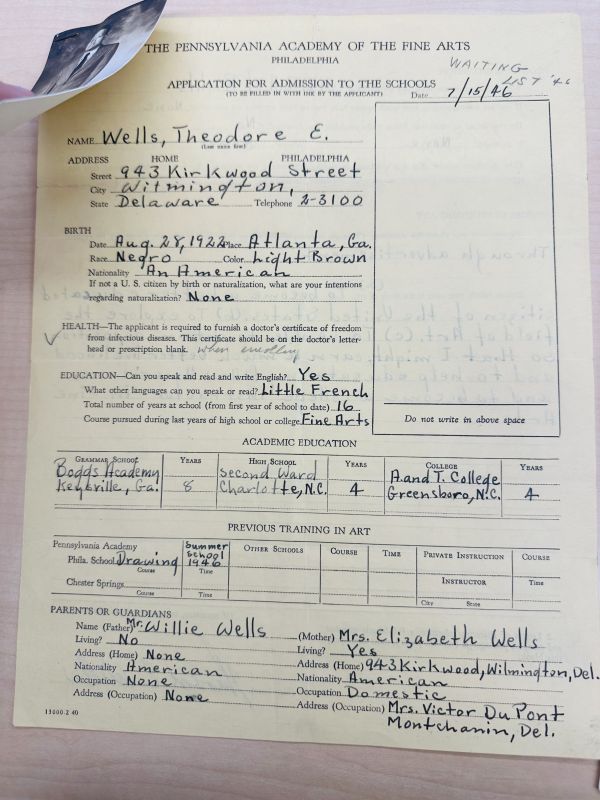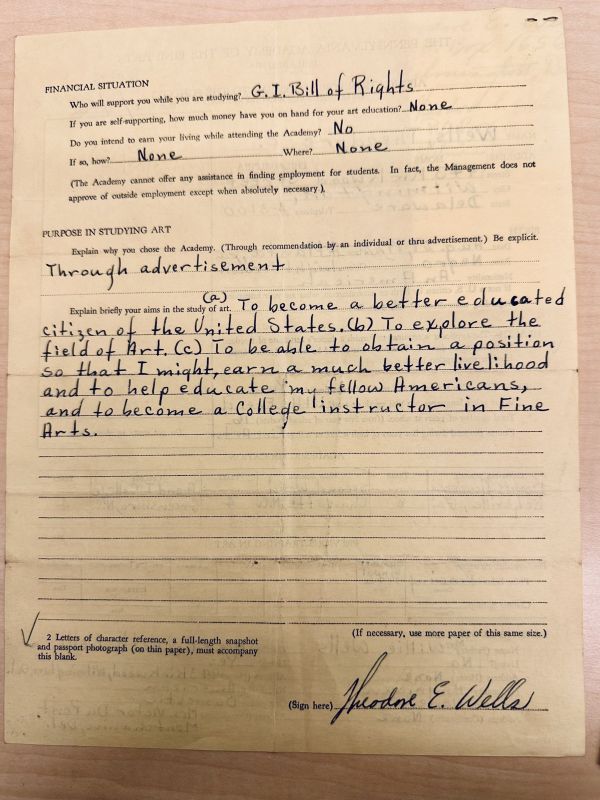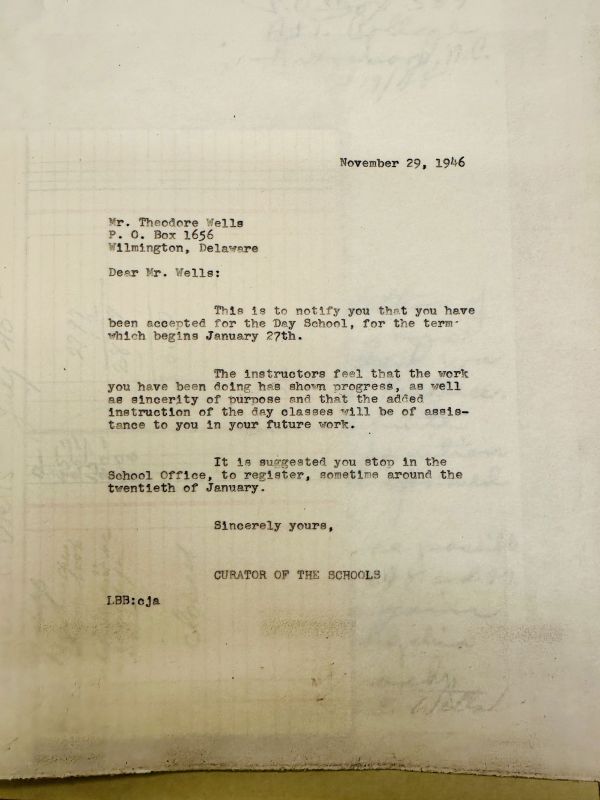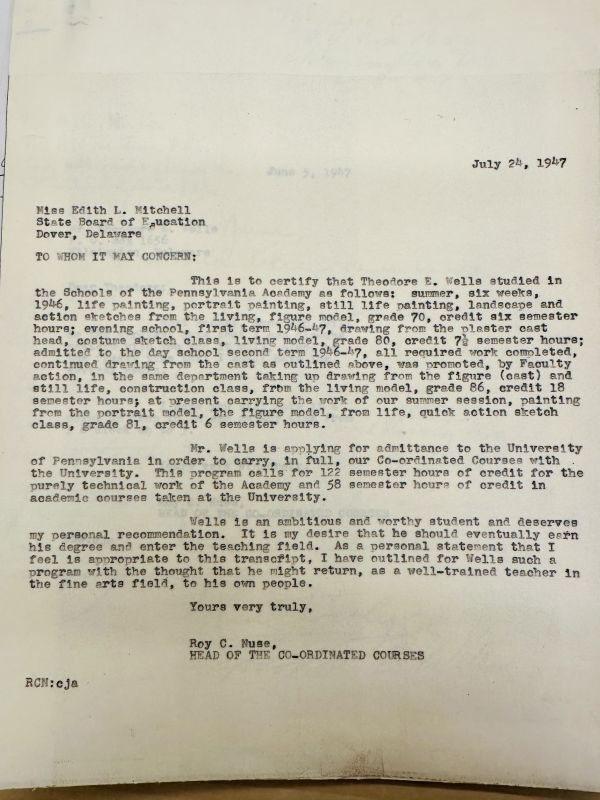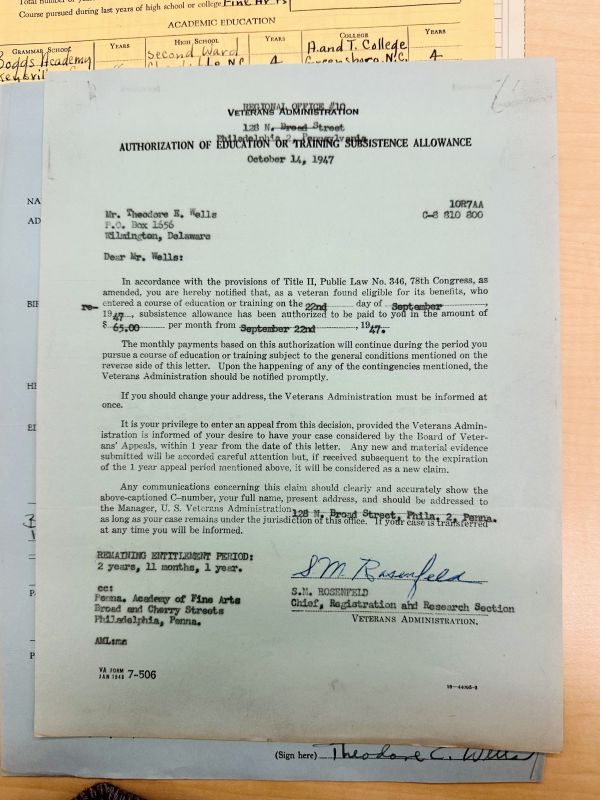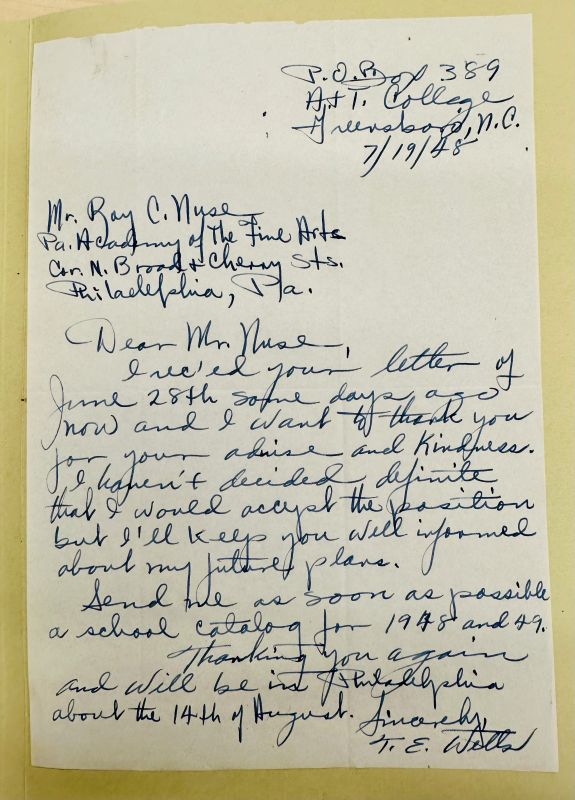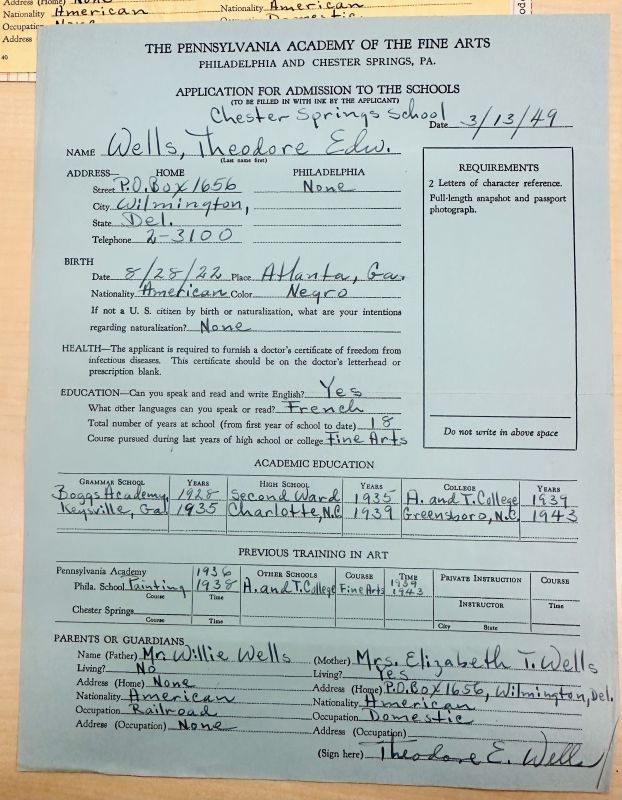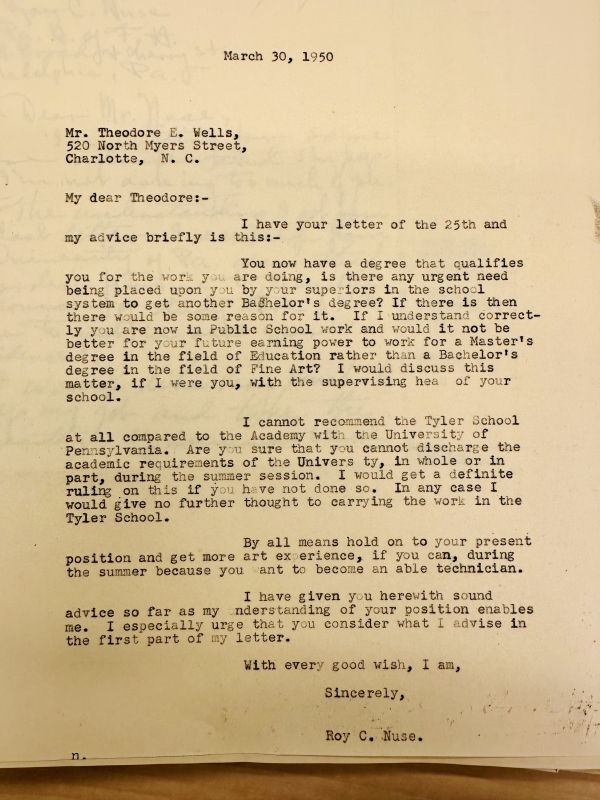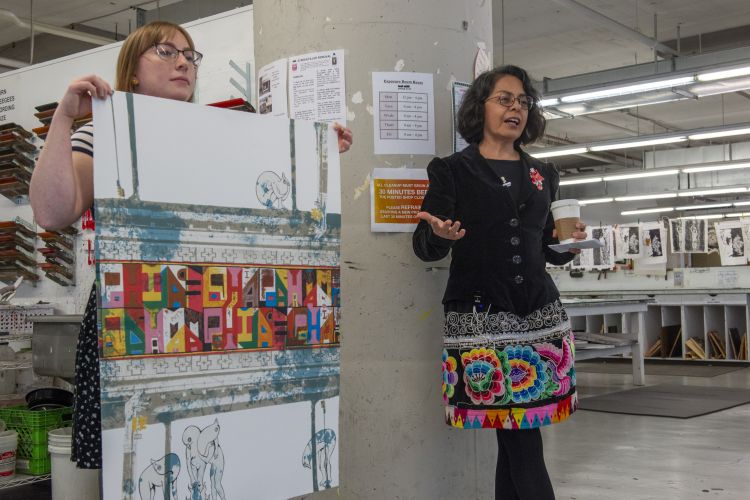STORIES FROM PAFA
Black History at PAFA | Theodore E. Wells, WWII Veteran, Teacher, and Artist
"Wells is an ambitious and worthy student and deserves my personal recommendation. It is my desire that he should eventually earn his degree and enter the teaching field. As a personal statement, that I feel appropriate to this transcript, I have outlined for Wells such a program with the thought that he might return, as a well-trained teacher, in the Fine Arts field…"
-Roy C. Nuse, Head of the Co-Ordinated Classes (March 1948)
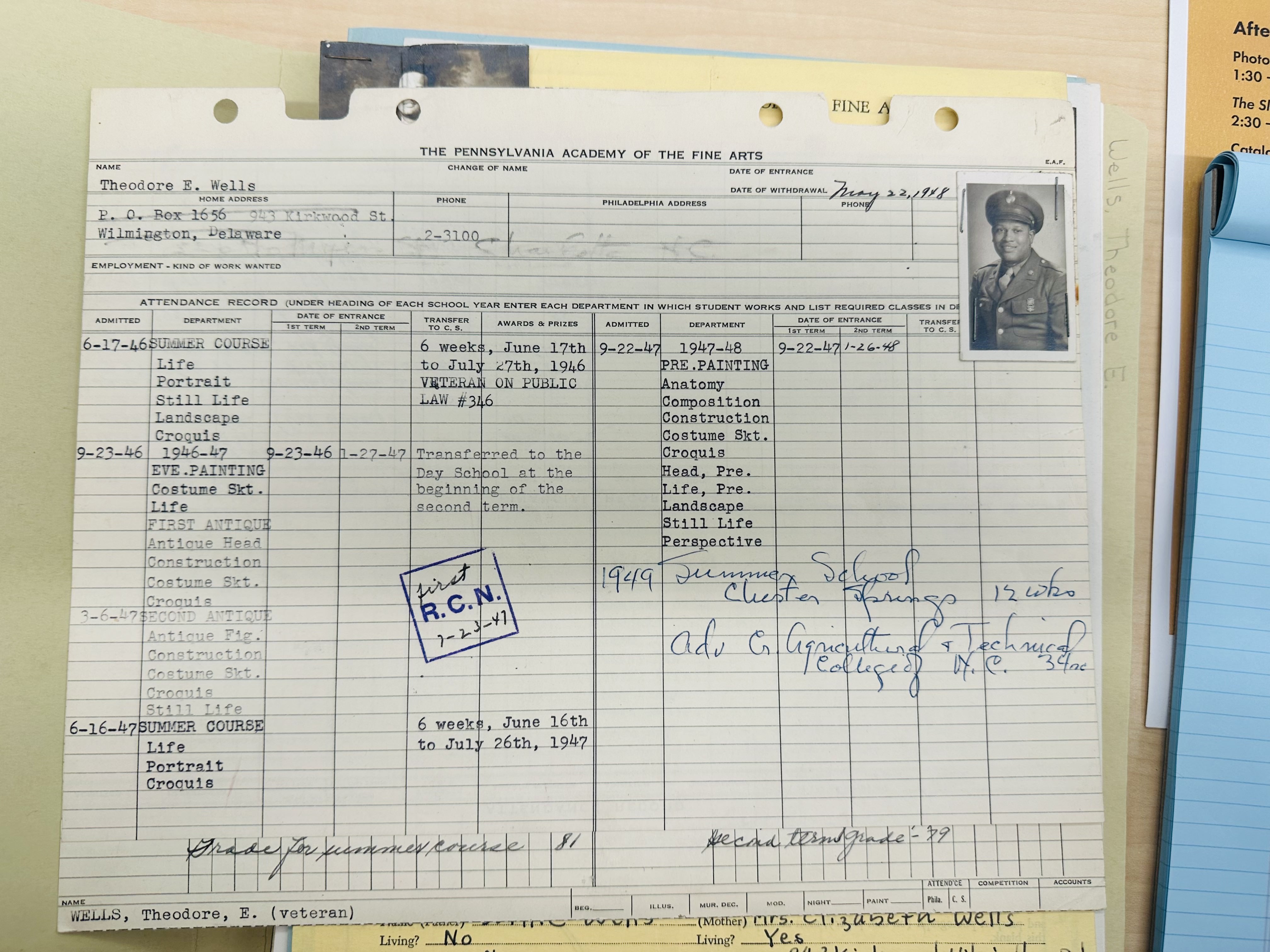
Transcript for Theodore E. Wells, 1946-49 from the Pennsylvania Academy of the Fine Arts Archives.
Renowned for its training in the arts, the Pennsylvania Academy of the Fine Arts (PAFA), which had been open to enrollment for Black artists since the mid-19th century, became the preferred institution for Theodore E. Wells (1922-1998) to realize his artistic aspirations, made possible by funding from the GI Bill. The enactment of the GI Bill by the U.S. government in 1944 aimed to financially support World War II veterans in pursuit of higher education. Although in theory the bill would make education more attainable, it grappled with racial disparities that hindered accessibility to education for Black individuals. Despite reinforcing racial discrimination in some aspects, the GI Bill did marginally broaden access to arts education for artists from diverse backgrounds.
Having graduated from the Agricultural and Technical School of Greensboro, NC, Theodore Wells, at the age of 23, commenced his studies at the Pennsylvania Academy of the Fine Arts (PAFA) in 1946. Utilizing the benefits extended to him as a WWII veteran through the GI Bill, Wells received monthly payments from the VA covering tuition and living expenses. This financial support facilitated his engagement in coursework and professional training.
In his application, in response to the prompt Explain briefly your aims in the study of art, Wells wrote: “(a) To become a better educated citizen of the United States. (b) To explore the field of Art. (c) To be able to obtain a position so that I might earn a much better livelihood and to help educate my fellow Americans and to become a College Instructor in Fine Arts.”
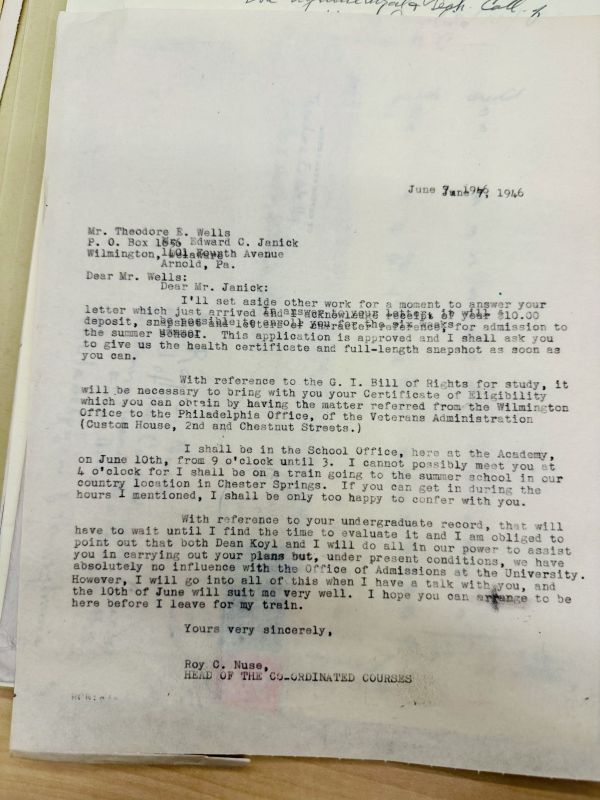
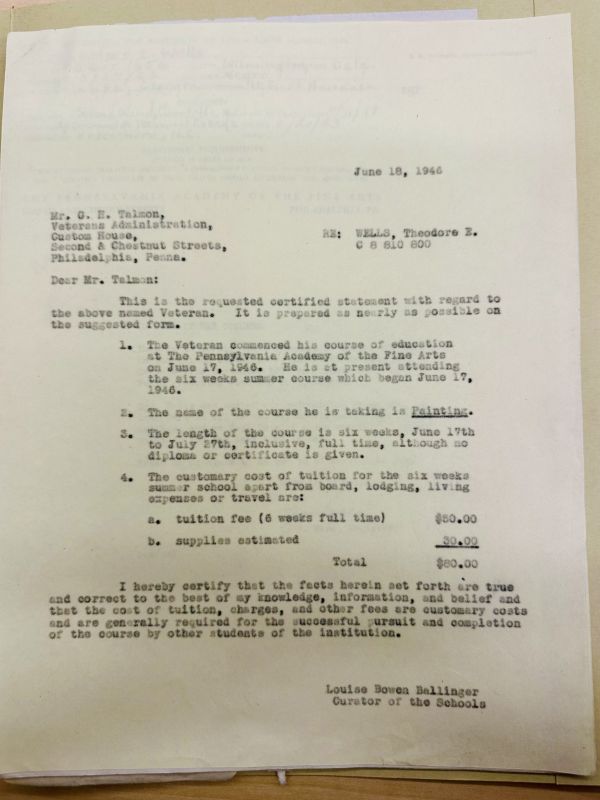
Wells received notice that his application was accepted in June 1946, and in this letter, written by Roy C. Nuse, Head of the Co-Ordinated Courses, Wells is requested to supply a Certificate of Eligibility in order to confirm his eligibility for the GI Bill benefits. That same month, Wells started his education at PAFA with six weeks of summer coursework in painting. Tuition was $50 and supplies cost $30.
Theordore’s education at PAFA continued into the first term of the ‘46-47 academic year with evening courses in drawing and sketching. In November 1946, Wells was accepted into the “day school” for the term starting January 27. Around July of 1947, Wells applied for admittance to the University of Pennsylvania “in order to carry, in full, [...] co-ordinated courses with the University,” according to a recommendation letter from Roy C. Nurse to the State Board of Education in Delaware, where Wells was a resident.
To cover expenses for school and living, Wells received monthly payments from the Veterans Administration as part of the GI Bill. According to a letter dated October 1947 from the organization, Wells received $65 per month “from September 22nd 1947 [that] will continue during the period you pursue a course of education or training subject.”
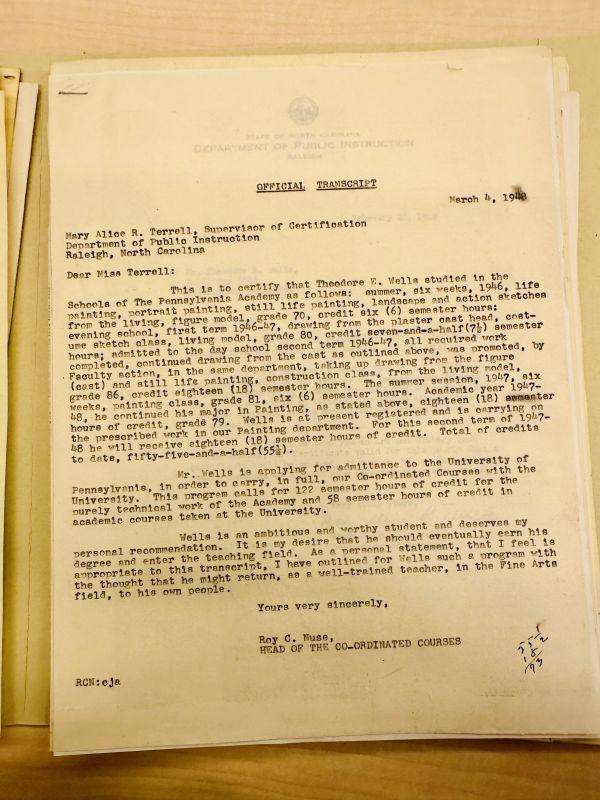
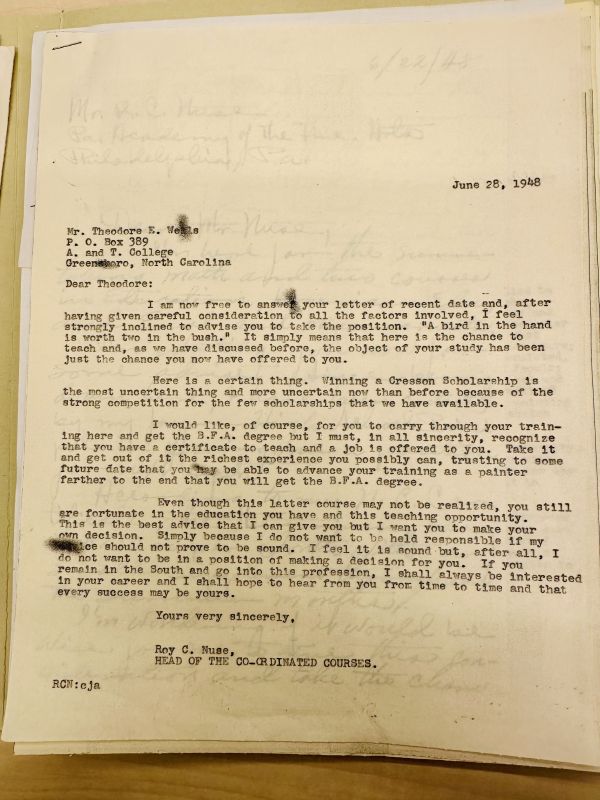
In March 1948, Roy C. Nuse sent an official transcript and personal statement about Wells to the Department of Public Instruction in Raleigh, NC. According to Wells' official transcript, “May 1948,” is the “day of withdrawal” from the Academy. This letter also mentions that Wells was applying to the University of Pennsylvania (using the same language as in the letter dated July 1947 to the department of education in Delaware). Roy C. Nuse concludes both letters with:
Wells is an ambitious and worthy student and deserves my personal recommendation. It is my desire that he should eventually earn his degree and enter the teaching field. As a personal statement, that I feel appropriate to this transcript, I have outlined for Wells such a program with the thought that he might return, as a well-trained teacher, in the Fine Arts field…
A letter from Roy C. Nuse in June 1948, implies Wells sought advice on whether to take the job or continue his arts education at PAFA. Roy C. Nuse wrote “...after having given careful consideration to all the factors involved, I feel strongly inclined to advise you to take the position.” Further in the letter, he wrote, “Here is a certain thing. Winning a Cresson Scholarship is the most uncertain thing and more uncertain now than before because of the strong competition for the few scholarships we have available….I would like, of course, for you to carry through your training here and get the B.F.A. degree…” and continued on to encourage Wells to take a teaching job offered to him.
In July 1948, Wells responded to Roy C. Nuse's letter, thanking him for his “advice and kindness.” He also requested a school catalog for the upcoming school year. In March 1949, Theodore re-applied to PAFA’s Chester Springs School, and in an official transcript, Roy C. Nuse wrote:
This student has completed with satisfaction the grades of assigned work for which credit has been extended. He is entitled to honorable withdrawal and he is entitled to readmission for the purpose of completing his undergraduate requirements, which he expects to accomplish in our Country Summer School this summer.
A letter from March 1950 from Roy C. Nuse to Theodore in North Carolina suggests Theodore is considering whether to pursue further education, and in what field, or to take a job. Roy C. Nuse wrote:
You now have a degree that qualifies you for the work you are doing, is there any urgent need being placed upon you by your superiors in the school system to get another Bachelor’s Degree? If there is, then there would be some reason for it. If I understand correctly, you are now in Public School work and would it not be better for your future earning power to work for a Master’s degree in the field of Education rather than a Bachelor’s degree in the field of Fine Art?
Post-academic pursuits in 1948 led Wells into a teaching career at Second Ward High School in Charlotte, NC, where he assumed the role of heading the Art Department. This tenure spanned five years before he accepted a position at Bancroft Jr. High (now The Bancroft School) in Wilmington, Delaware. In the subsequent years, Wells made noteworthy contributions to the arts scene in Wilmington, participating in exhibitions and engaging with various arts organizations. Wells exhibited his work at several locations over the years and worked as an illustrator and layout artist.
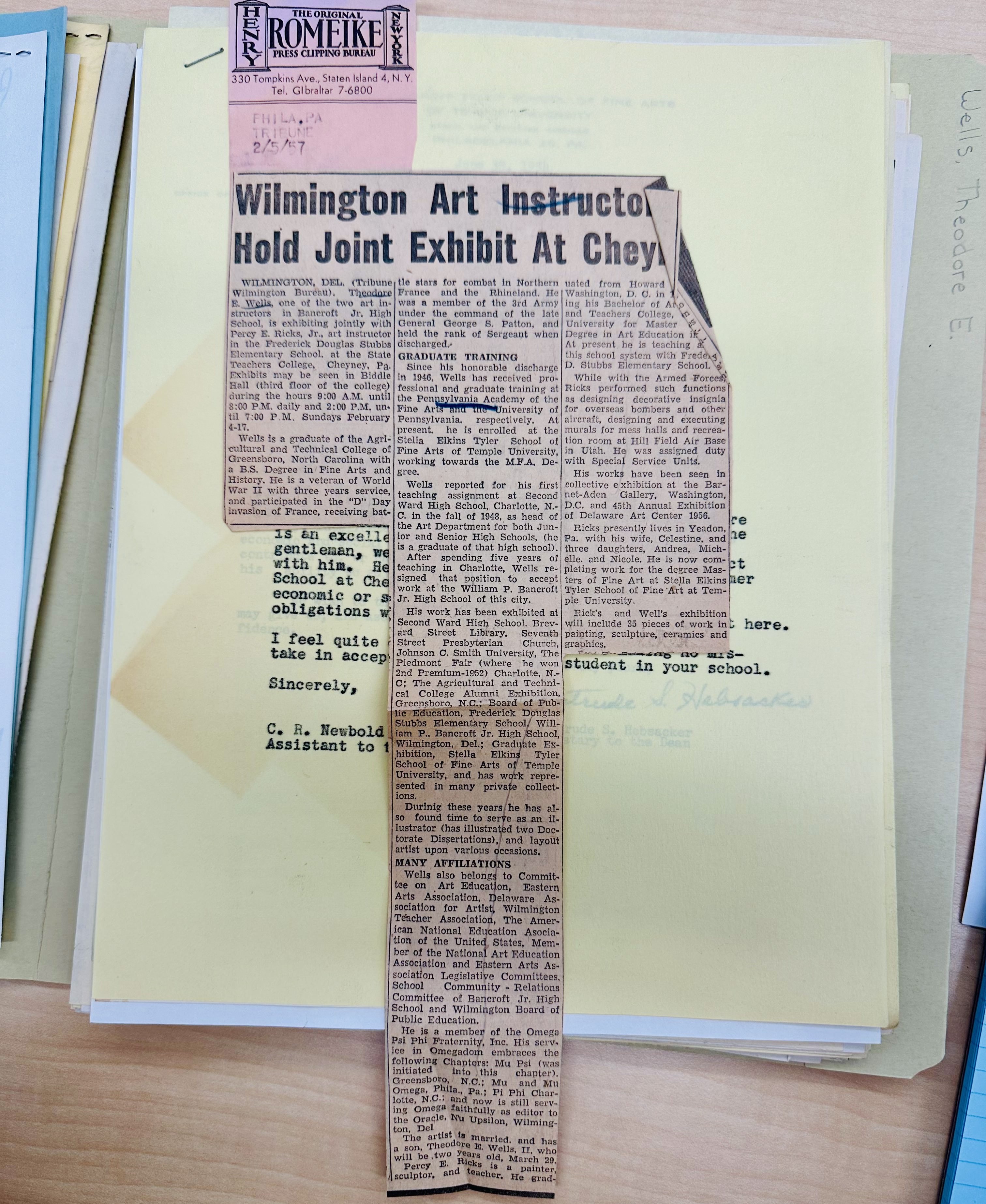
Newspaper clipping from the Philadelphia Tribune about Theodore Wells' and Percy E. Ricks, Jr.'s joint exhibition, February 1957 from the Pennsylvania Academy of the Fine Arts Archives.
In a Philadelphia Tribune article dated February 5, 1957, Theodore Wells was mentioned as one of two art instructors at Bancroft Jr. High (currently known as The Bancroft School) in Wilmington, Delaware. The article announced that he was collaborating on an exhibition with Percy E. Ricks, Jr., an art instructor at the Frederick Douglass Stubbs Elementary School (now Stubbs Early Education Center). Their joint exhibition took place at the State Teachers College in Cheyney, PA. At the time, in 1957, Wells was enrolled in the Stella Elkins Tyler School of Fine Arts at Temple University, working toward an MFA.
Despite the overall challenges with the GI Bill, it played a pivotal role in Wells' pursuit of a career in the arts. He navigated a successful career as an artist and teacher in an era of profound adversity for Black individuals in the United States. His professional trajectory underscores the importance of understanding historical barriers and the enduring impact of individuals who challenged them with resilience and determination. These documents capture Thedore E. Wells' story, one among many stories from our archives that tell the human experience.
We're so excited you're planning to visit PAFA!
Make time for art — visit us Thursday to Sunday.
Before reserving your tickets, please review helpful information about museum hours, accessibility, building access, and special admission programs.
If you have any questions, feel free to reach out to us at visitorservices@pafa.org — we’d love to help!
